Director Matt Reeves’ Dawn of the Planet of the Apes showcases the incredible combination of nuanced motion captured performances and visual effects by Weta Digital for its starring primates. But before Weta took on its digital apes, several previs outfits helped craft story points and action beats for the film. We take a look at the previs and postvis work by Cinedev, MPC and Halon.
Cinedev’s new tools
Fox’s in-house previs studio Cinedev was the first studio involved on Dawn, doing both pitchvis and previs for many key sequences when director Rupert Wyatt was still attached to the film, and then continuing as Reeves came on board. The work at Cinedev was led by previsualization director John Griffith, who had also worked on Rise of the Planet of the Apes. This time around he looked to some new tools to help speed up the previs effort – beginning with a proof of concept for the film, exploration of the elk chase and many shots of the colony attack.
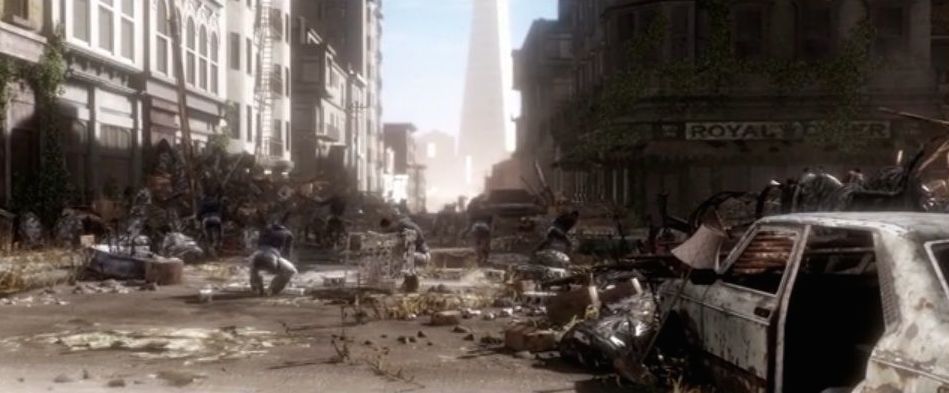
That new tech was the introduction of Crytek’s Cinebox toolset into the previs mix. “We spent the better part of the last 3 years helping Crytek develop it to fit efficiently into our pipeline,” says Griffith. “One important issue was that it had to be as fast or faster than the traditional methods of rendering straight out of Maya’s view-port. Our first foray was on a proposed teaser for Dawn when Rupert Wyatt was attached to direct. We were tasked with recreating the backlot at Fox where the teaser was planned to be shot. We accurately replicated the backlot to perfect scale using blueprints obtained at the studio. Although the film ultimately changed hands and direction it was exciting to be able to achieve a fairly accurate depiction of what the sequence would have looked like shot on the backlot.”
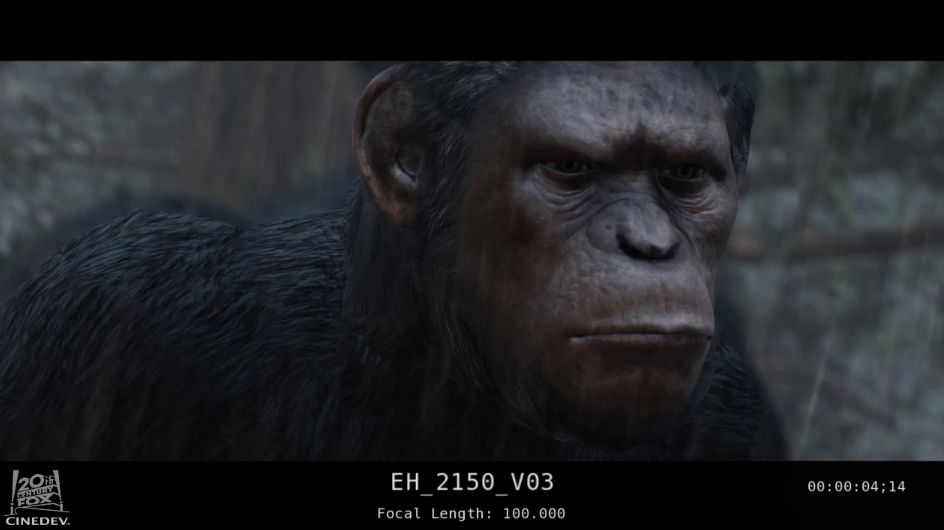
Griffith notes that one of his goals for some time has been to merge previs and concept art into one medium using art department assets directly in previs. He says that Cinebox and realtime rendering fits well with this model to explore lighting, mood and texture amongst several different departments. “Two of the shots we did,” says Griffith, “the tank shot and the colony fly through did just that. Everyone could easily see just how cool the idea that Matt Reeves put forward for his single shot on the tank. Before we had this tech at our disposal a shot like that would have just looked like a cartoon. Simple shaded geometry to try and get a basic idea across and if not done correctly would not inspire confidence in the idea. We actually simulated the tank driving over terrain at an accurate speed which gave us the real feel of the live action tank. We drove it through an accurate to scale mock up of the set and colony entrance. We also rotated the turret on the tank at a speed commensurate with the real tank used in the film.”
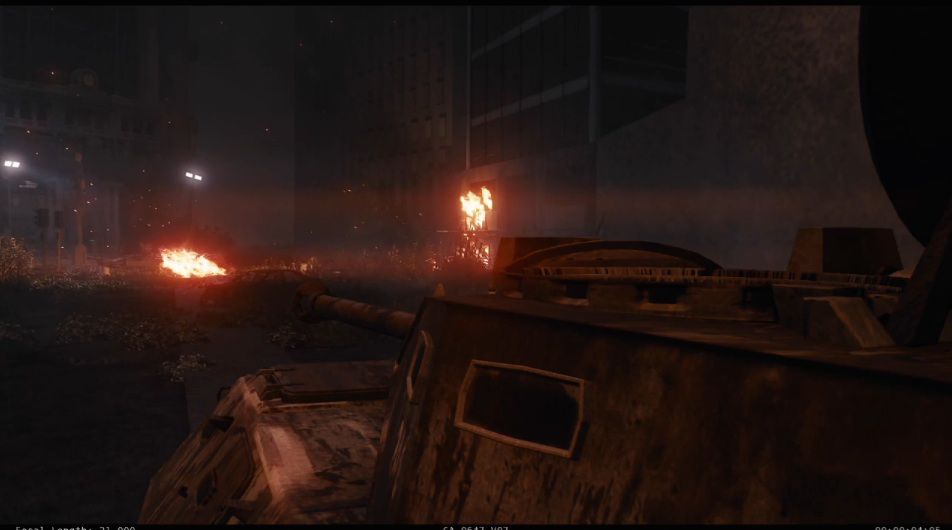
MPC choreographs a colony attack
MPC contributed a range of previs and postvis services to Dawn, including further exploration of the colony attack sequence as hundreds of apes descend on downtown San Francisco and attack the surviving humans. Much of the live action would be filmed in New Orleans, so previs and postvis was vital in choreographing action that could serve as reference for principal photography, mocap performances and visual effects environments.
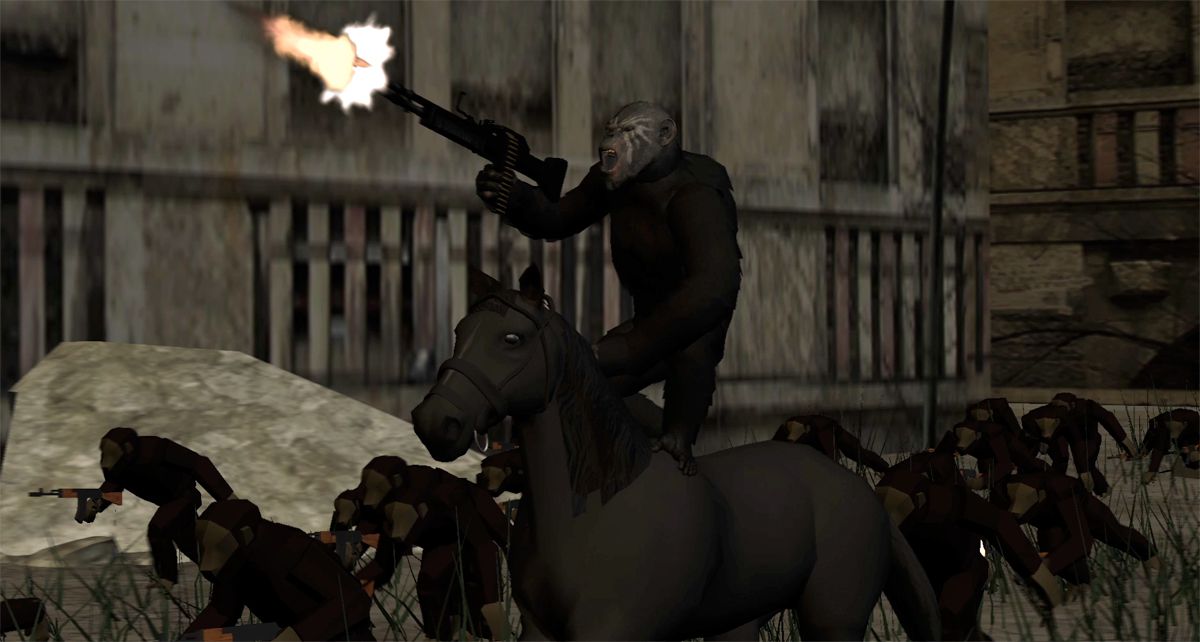
An important blocking aspect to the colony attack was that the story would be seen from their major viewpoints – Dreyfus (Gary Oldman), Koba (Toby Kebell) and Caesar’s son Blue Eyes (Nick Thurston). “What that meant was,” explains MPC animation supervisor Duane Floch, “we had to deal with all that data but also come up with fine story points, which is part of Matt’s visual style. At no point in the sequence was there ever a question about whose perspective you were looking at it through, where you were in the geography and what was happening. All the while it was following this simmering story arc until the final breakthrough of the gate.”
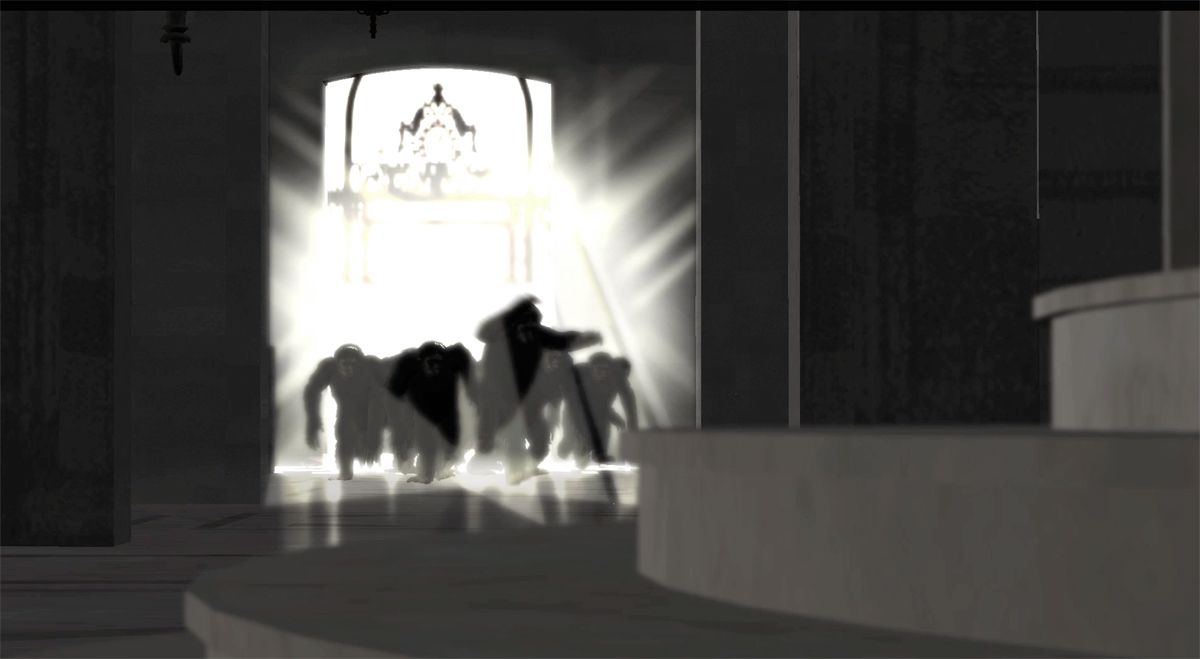
MPC worked closely with second unit director Brad Parker to co-ordinate the sequence, with the studio set-up at both Louisiana and Santa Monica locations during the shoot. Background apes for the attack were low-poly and cached out as animation cycles working in Maya. Hero apes came from production and were mostly keyframed. “We also got a little bit of mocap which we extrapolated into combinations,” says Floch. “We made various cycles of running and ducking, running with a gun, running and getting shot and falling. We’d keyframe these and store in a library for people to use.”
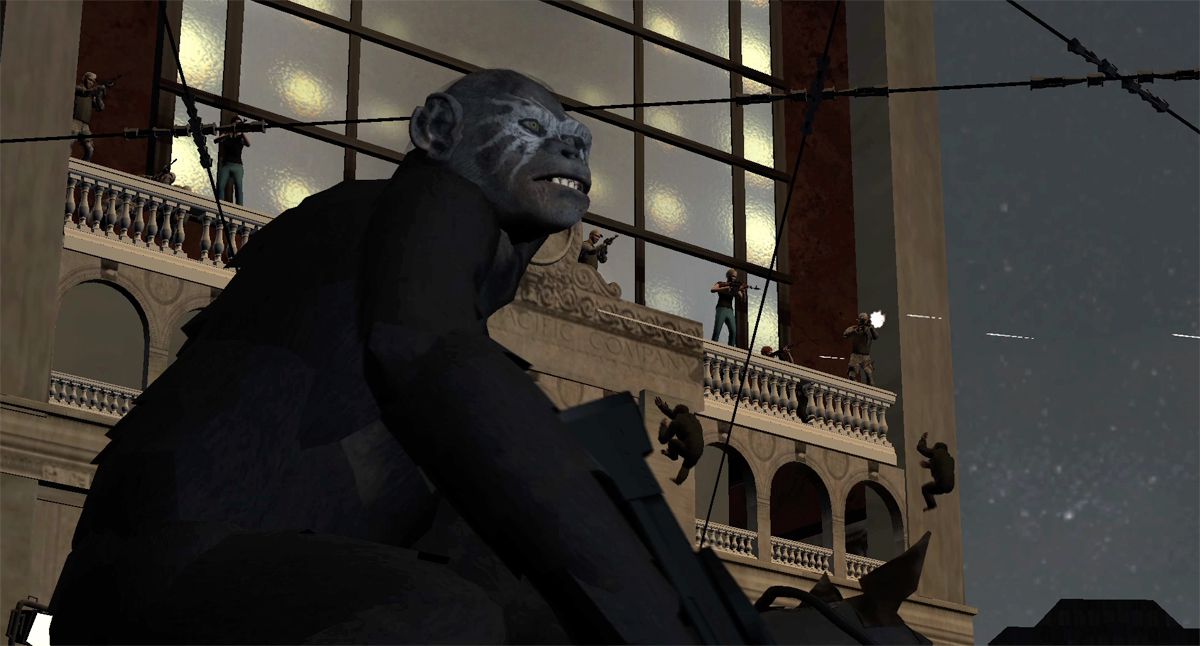
For postvis work, Floch notes that MPC was able to take advantage of its Bangalore facility to help with matchmoving and roto scenes. “We could send five or six plates from editorial before we left overnight and they’d get that at the start of their day and by the time we came in the next morning they had a first pass on the matchmove. Half a day later we’d get the roto. It really freed up our artists to cover story and animation instead of having to track shots (although we did track a number).”
Final action
The film’s climatic final action sequence was envisaged with the help of previs from Halon, which initially had a tight four week turnaround to produce shots that would serve as a guide for a mocap shoot. “I was paired with Gary Powell (stunt co-ordinator and second unit director),” says Halon previsualization supervisor AJ Briones. “They gave us the story beats that needed to happen. We worked with storyboard artist Josh Sheppard who put together some rough thumbnails while Gary did a rough video pass with some stunt choreography ideas. We took all that information in and laid it all out in the geography where that fight would happen.”
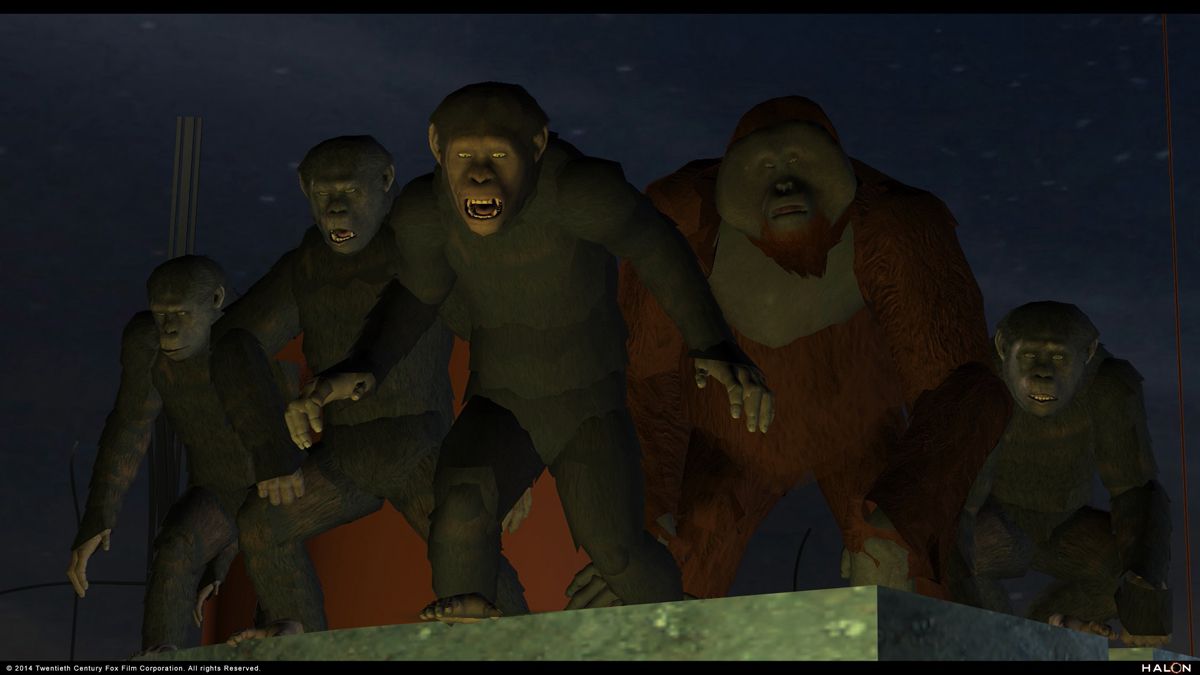
Since the sequence took place in what would ultimately be a completely computer generated set, Halon was able to incorporate its previs into the environment built by Weta Digital. But as the team began choreographing shots and also camera angles, it soon became clear one aspect of the environment made it difficult to stage the action.
“The set was very symmetrical,” notes Briones, “so any time the camera did a 180 you’d get lost because everything was mirrored. In the sequence, a major event takes place to disrupt all the action and raise the stakes. I basically suggested that we use that as an opportunity to create a new set piece to stage the rest of the action. After we did that it solved all the problems for us.”
Artists utilized low poly ape rigs provided by the production, using Maya to roto-animate over the video pieces recorded by Gary Powell and keyframing the rest. “Over the top of that we did quite a bit of compositing in After Effects to add particulate matter,” says Briones. “We also did quite a bit of simulation – we would do sims in Maya that were low-res and then keyframe over the top of that.”
Halon also contributed to the subsequent mocap performances carried out by Andy Serkis and Toby Kebbell for the final action sequence, firstly in that production would take the studio’s scene files to help build props for the performance capture actors to work with. And, secondly, in more of a postvis fashion. “We would get the dailies back from the mocap shoot,” explains Briones, “and we would take and roto-mate the final performances of Andy and Toby and re-incorporate them into the previs. I call it virtual production postvis – we would re-key those actions they did to get it ready to turnover to Weta Digital, and it was also helpful for editorial.”

[…] Designing Dawn of the Planet of the Apes […]
[…] Designing Dawn of the Planet of the ApesREAD ORIGINAL SOURCE ARTICLE HERE: http://www.fxguide.com/quicktakes/designing-dawn-of-the-planet-of-the-apes/ […]